The Library of Consciousness
of Consciousness
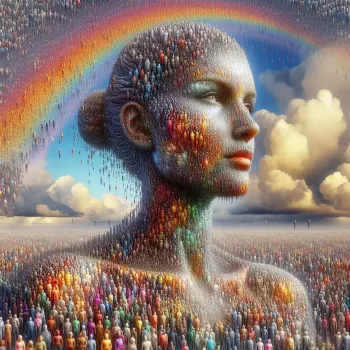
Nations are perhaps the most important social group to which individuals belong.

A superorganism is a group of organisms that together display the functional organization seen in single organisms. The individuals making up the superorganism are often of the same species, such as ants, termites, or honeybees. Some scientists speculate that humanity itself, with its global communication networks and collective knowledge, displays hallmarks of a superorganism.
Superorganisms exhibit emergent capabilities beyond what each individual can do alone. There seems to be no central authority directing the collective. Each member follows simple behavioral rules, responding to signals and interacting with neighbors in the group. Yet complex coordinated problem-solving emerges from the whole. Researchers continue investigating how superorganisms arise. Understanding this phase transition from individual behaviors to group intelligence may provide insights about the evolution of societies, brains, and collective decision-making.

A Clarification
Reflections on Two Converse Forms of Spirit
Teilhard de Chardin identifies two distinct spiritual paths: unity through “relaxation” (Eastern pantheism) where individual egos dissolve into a common foundation, and unity through “tension” (Western mysticism) where individuals become more themselves while converging toward a universal center. He argues that cosmic evolution favors the latter path, where true union differentiates rather than fuses, and calls for a new Western mysticism that combines personalizing love with cosmic totalization.

A Dialogue on Metasystem Transition
Valentin Turchin explores the theory of metasystem transitions through a conversational approach, examining how new layers of control emerge when individual systems combine into a larger, integrated system. These transitions, Turchin argues, are the key moments in evolution—like stepping stones in both biological and cultural development. By viewing evolution as a series of these transformative quanta, he reflects on past evolutionary leaps and speculates on what they could reveal about the future path of universal evolution.

A Major Problem for Anthropology
Teilhard envisions humanity not as evolution’s finale, but as its awakening. As our minds and societies knit into a single global consciousness—the noösphere—evolution becomes self-aware, guiding itself through thought and collaboration. In this new phase, life chooses its own becoming and reaches out toward the ultra-human.

A Phenomenon of Counter-Evolution in Human Biology
or the Existential Fear
Teilhard explores the “existential fear” that grips modern humans as we confront the vastness of the universe and our seeming insignificance within it. He believes this fear stems from our growing awareness of cosmic immensity, our isolation, and the threat of depersonalization. However, he proposes a radical shift in perspective: by viewing the universe as convergent rather than chaotic, we can transform our terror into hope. This “convergent universe” is one that’s moving towards greater complexity and consciousness, ultimately leading to a unifying center that gives our existence profound meaning and purpose.

A Symbiotic View of Life
We Have Never Been Individuals
For animals, as well as plants, there have never been individuals. This new paradigm for biology asks new questions and seeks new relationships among the different living entities on Earth. We are all lichens.

Alien Love
Terence explores “alien love” and humanity’s evolving relationship with the Other. He posits that psychedelic experiences, particularly those induced by psilocybin mushrooms, may be a form of extraterrestrial contact, and argues that as we venture into space and deepen our understanding of consciousness, we are collectively yearning for connection with something beyond ourselves. This cosmic eros could reshape our cultural and spiritual landscape, potentially leading to a transformative “marriage” with the alien Other that propels humanity into a new phase of evolution and understanding.

Amherst Press Conference
Mr. Fuller and Maharishi came from different traditions of knowledge, but both talked about the universal basis of life, the individual, and the cosmos.

Appreciating Imagination
Join Terence McKenna in this weekend workshop as he takes us on an imaginative journey into the depths of human creativity. He explores psychedelics, virtual worlds, and shamanic states of consciousness, saying how an embrace of our imagination allows us to envision and manifest alternate realities beyond cultural conditioning. By cultivating our creative faculties with mathematical reasoning, intuition, and immersion in nature, he guides us toward transcending ideological limits into an enlightened future of compassion. Ultimately, breaking boundaries through the power of imagination will inspire us to reach new heights of understanding and connectivity.
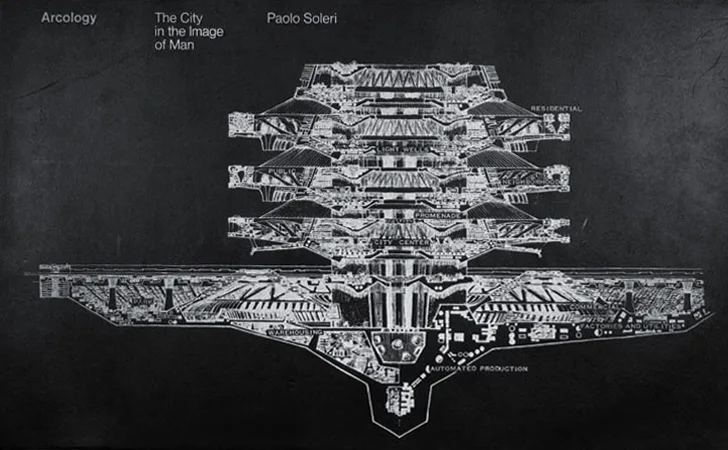
Arcology
The City In The Image Of Man
Visionary architect Paolo Soleri challenges us to think of cities as biological entities with his concept of the arcology—a massive, self-sustaining, urban “organism of a thousand minds” designed to exist in harmony with nature. He proposes that the purpose of life is aesthetogenesis: the universe progressively complexifying itself into compassionate, beautiful structures. Soleri showcases 30 potential arcologies through incredibly detailed diagrams, explaining how each integrates itself economically and ecologically into the world and fulfills his aesthetogenic criteria. The scope of his vision ranges from cities designed to span canyons or float on the oceans to cube-shaped metropolises suspended on pillars, and even a space habitat. While comprehensive, Soleri's focus lies primarily on realizing arcologies that meet humanity's moral imperative for sustainable urban living.

Artificial Intelligence and the Superorganism
Daniel Schmachtenberger and Nate Hagens discuss a surprisingly overlooked risk to our global systems and planetary stability: artificial intelligence. Through a systems perspective, Daniel and Nate piece together the biophysical history that has led humans to this point, heading towards (and beyond) numerous planetary boundaries, and facing geopolitical risks all with existential consequences. How does artificial intelligence not only add to these risks, but accelerate the entire dynamic of the metacrisis? What is the role of intelligence versus wisdom on our current global pathway, and can we change course? Does artificial intelligence have a role to play in creating a more stable system, or will it be the tipping point that drives our current one out of control?

Awakening to Archaic Values
A weekend workshop in which Terence encourages humanity to return to harmonic habits which have been lost in the tide of time.

Build Your Own Damn Wagon
(Laws and Freedom, Habits and Novelty)
"Do not watch, do not consume," implores Terence McKenna, inviting us on a thought-provoking journey to reclaim our humanness. By building our own conceptual wagons, rather than riding ready-made vehicles of meaning, we can travel along unique paths of critical thinking. Once within our own virtual worlds, the wonder of our distinctive minds will be open for discovery.

Centrology
An Essay in a Dialectic of Union
Teilhard proposes a guiding hidden rule present in the universe, leading everything from simplicity to complexity and consciousness. He suggests that as cosmic particles evolve, they become more complex and conscious, ultimately converging toward a unifying Omega point. This vision offers a fresh perspective on the universe, blending science and philosophy to reveal a grand, interconnected cosmic journey.
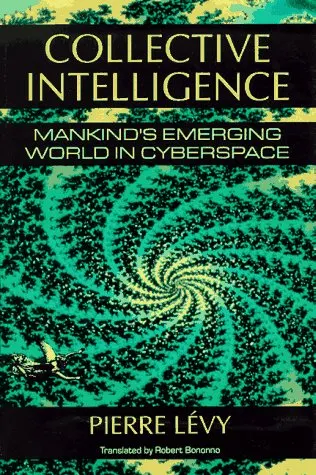
Collective Intelligence
Mankind's Emerging World in Cyberspace
The number of travelers along the information superhighway is increasing at a rate of ten percent a month. How will this communications revolution affect our culture and society? Though awed by their potential, we’ve feared computers as agents of the further alienation of modern man: they take away our jobs, minimize direct human contact, even shake our faith in the unique power of the human brain. Pierre Lévy believes, however, that rather than creating a society where machines rule man, the technology of cyberspace will have a humanizing influence on us, and foster the emergence of a “collective intelligence”—a meeting of minds on the Internet—that will validate the contributions of the individual.

Collective Memory, Group Minds, and the Extended Mind Thesis
While memory is conceptualized predominantly as an individual capacity in the cognitive and biological sciences, the social sciences have most commonly construed memory as a collective phenomenon. Collective memory has been put to diverse uses, ranging from accounts of nationalism in history and political science to views of ritualization and commemoration in anthropology and sociology. These appeals to collective memory share the idea that memory ‘‘goes beyond the individual’’ but often run together quite different claims in spelling out that idea. This paper reviews a sampling of recent work on collective memory in the light of emerging externalist views within the cognitive sciences, and through some reflection on broader traditions of thought in the biological and social sciences that have appealed to the idea that groups have minds. The paper concludes with some thoughts about the relationship between these kinds of cognitive metaphors in the social sciences and our notion of agency.

Conceptions of a Global Brain
an Historical Review
Imagine a giant, intelligent brain made of humanity and its computers—the Global Brain. This idea blends views of society as a living organism, a universal encyclopedia, and an emerging higher consciousness. Global networks like the Internet not only share information but also learn and adapt together. By combining insights from evolution and cybernetics, we can overcome conflicts and build a collective intelligence that makes solving world problems more efficient and creative.
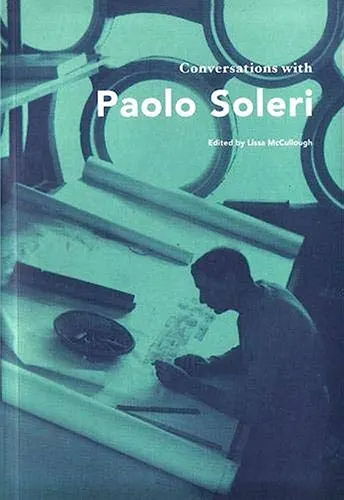
Conversations with Paolo Soleri
Paolo Soleri's architectural-philosophical thinking sets forth fundamental reformulations to address the globalizing world's most urgent environmental, urban infrastructural, and socio-ethical problems. In this book, Soleri's most recent ideas are distilled into an accessible overview for the general reader. Soleri proposes to transform our societal systems while raising sights to a radically long-term and humanistic perspective. Among the interrelated concepts outlined here are Soleri's highly original ideas of orchid and forest, the city as hyper-organism, the urban effect, and the love project. These inspiring ideas are acutely timely in light of current environmental trends: responding to global climate change, radically reducing oil dependence, embracing frugality and reduced consumption, while simultaneously confronting issues of suburban sprawl, urban renewal, smart land use, and wise food production.

DMT and Integrated Information Theory
Neuroscientist Christof Koch’s 5-MeO-DMT experience, marked by self-dissolution and “terror and ecstasy,” sparks a deep discussion on consciousness, Integrated Information Theory (IIT), and reality. IIT suggests consciousness is non-computable and may exist beyond individual brains, potentially forming higher-order minds. Koch inquires whether his psychedelic journey was a mere brain state or a glimpse into a universal mind.
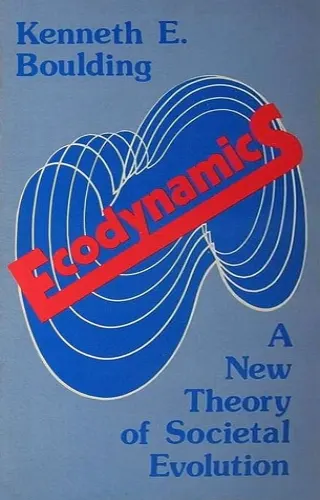
Ecodynamics
A New Theory of Societal Evolution
Embark on a captivating journey into Ecodynamics, a realm where the choreography of humanity and nature unfolds. This narrative intricately weaves economics, ecology, and human behavior, illuminated by Boulding's visionary concept of ecodynamics. His framework reveals the harmonious yet fragile bond between ecosystems and economies, a bond often ignored at our peril. Boulding's interdisciplinary exploration spans from population dynamics to resource usage and technology's role, dismantling the myth of infinite growth in a finite world. Ecodynamics challenges norms, offering profound insights that beckon us to adopt sustainable practices. This clarion call echoes—safeguard both civilization and the environment for lasting well-being.

Ecological Awareness
When Alan Watts talked about the ‘mystical experience’ among scientific circles, he preferred to call it ‘ecological awareness’—referring to a state of mind in which a person ceases to feel separate from the environment in which he or she exists.
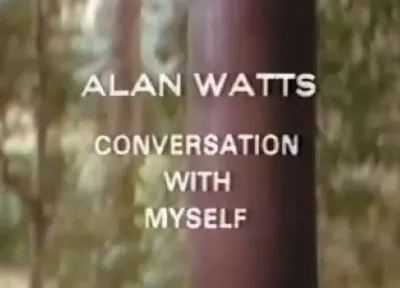
Conversation with Myself
Essential Lectures, Program 12
While walking in a field above Muir Woods, Alan Watts points to humankind's attempts to straighten out a wiggly world as the root of our ecological crisis.
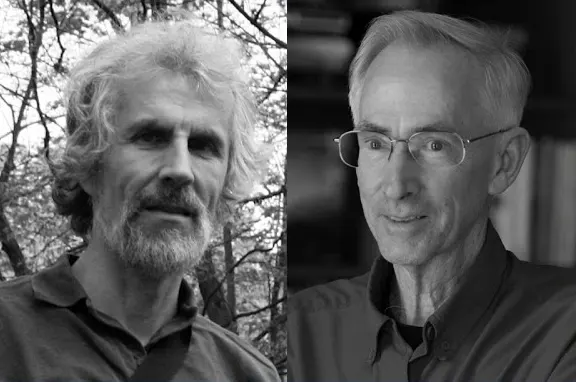
Glimpsing the Global Brain
Complex systems theorist Heylighen and evolutionary biologist Wilson discuss a possible phase transition of humanity in which the members of our species become neurons in a planetary brain, utilizing the Internet as a shared exocortex.

Global Brain
Foundations of a Distributed Singularity
Cadell Last discusses the concept of a “Global Brain”—a distributed, self-organizing superintelligence emerging from the interconnectedness of humans and information-communication technologies. He explores the metaphorical, evolutionary, and cybernetic foundations of this potential phenomenon and its implications for human civilization, suggesting it may lead to a future of increased intelligence, cooperation, and abundance.
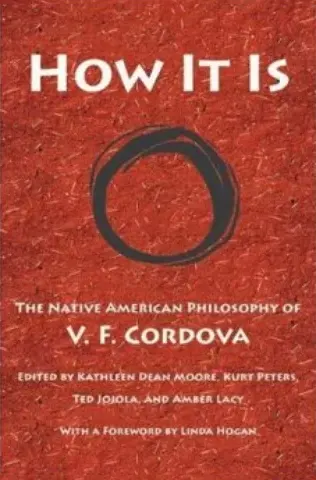
How It Is
The Native American Philosophy of V. F. Cordova
Viola Cordova was the first Native American woman to receive a PhD in philosophy. Even as she became an expert on canonical works of traditional Western philosophy, she devoted herself to defining a Native American philosophy. Although she passed away before she could complete her life’s work, some of her colleagues have organized her pioneering contributions into this provocative book. In three parts, Cordova sets out a complete Native American philosophy. First she explains her own understanding of the nature of reality itself—the origins of the world, the relation of matter and spirit, the nature of time, and the roles of culture and language in understanding all of these. She then turns to our role as residents of the Earth, arguing that we become human as we deepen our relation to our people and to our places, and as we understand the responsibilities that grow from those relationships. In the final section, she calls for a new reverence in a world where there is no distinction between the sacred and the mundane. Cordova clearly contrasts Native American beliefs with the traditions of the Enlightenment and Christianized Europeans (what she calls “Euroman” philosophy). By doing so, she leads her readers into a deeper understanding of both traditions and encourages us to question any view that claims a singular truth. From these essays—which are lucid, insightful, frequently funny, and occasionally angry—we receive a powerful new vision of how we can live with respect, reciprocity, and joy.

Human Metasystem Transition (HMST) Theory
This article proposes a theory of human evolution termed Human Metasystem Transition (HMST), suggesting that major transitions in human organization have been facilitated by the emergence of new information media and energy sources. It posits that the current convergence of the Internet and renewable energy could catalyze a fourth metasystem transition, leading to a global superorganism with compressed spatial and temporal dimensions of human interaction.

In Defence of the Hivemind Society
The idea that humans should abandon their individuality and use technology to bind themselves together into hivemind societies seems both farfetched and frightening—something that is redolent of the worst dystopias from science fiction. In this article, we argue that these common reactions to the ideal of a hivemind society are mistaken. The idea that humans could form hiveminds is sufficiently plausible for its axiological consequences to be taken seriously. Furthermore, far from being a dystopian nightmare, the hivemind society could be desirable and could enable a form of sentient flourishing. Consequently, we should not be so quick to deny it. We provide two arguments in support of this claim—the axiological openness argument and the desirability argument—and then defend it against three major objections.
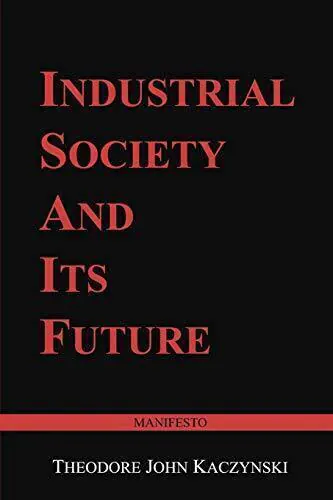
Industrial Society and Its Future
The Unabomber Manifesto
The anti-technology essay by Ted Kaczynski, also known as the Unabomber. His manifesto contends that the Industrial Revolution began a harmful process of natural destruction brought about by technology, while forcing humans to adapt to machinery, creating a sociopolitical order that suppresses human freedom and potential.

Information-Energy Metasystem Model
The human system is developing into a global biocultural superorganism, yet existing control systems appear inadequate for aligning a stable global goal state. Cadell Last proposes the Information-Energy Metasystem Model (IEMM), exploring human control system transitions throughout history. Drawing from cybernetic theories, the IEMM posits that major control transitions depend on specific information-energy control and feedback properties. As humanity approaches a potential fourth metasystem, Last argues for distributed, digital, and democratic mechanisms to organize a global commons, harnessing collective intelligence and direct democracy.

Interview on Cybernetics
Heinz von Förster delves into the enigmatic realm of cybernetics. The conversation dances around the essence of this field, exploring its core principles of circularity, self-organization, and the nature of information. Together with Sherwin Gooch, he grapples with profound questions surrounding the definition of life, the Gaia hypothesis, and the tantalizing possibility of replicating human consciousness. Ultimately, the dialogue underscores the intricate interplay between observer and observed, challenging conventional notions of information and reality.

Levels of Magnification
Philosophy: East and West, Program 26
We’re living under the shadow of potential catastrophe—atomic testing, global tension, and existential dread—yet many seem hypnotized into indifferent routine. Our personal struggles mirror a cosmic dance: just as the birth and death of cells form a healthy body, our conflicts may contribute to a larger, mysterious harmony. Embracing uncertainty with a broader sense of identity, rather than succumbing to panic or despair, might just be the secret to living wisely in this unpredictable, yet oddly charming, cosmic experiment.

Life and the Planets
Pierre Teilhard de Chardin explores the concept of complexification in the universe, focusing on the ever-increasing combination of smaller elements into larger structures, and then extrapolates this behavior to humanity's current situation. What if the human species is an intermediary evolutionary stage, and what would the next rung on the ladder look like? Teilhard suggests that it will involve the merging-together of all humanity into a divine, planetized consciousness.

Life, Intelligence, Consciousness, AI, and the Future of Humans
What if our minds are merely vessels for a universal consciousness, and suffering is just a bug in our mental programming? Joscha Bach and Lex Fridman explore this radical idea, discussing the stages of self-awareness, the potential for telepathy, and the transformative power of AI. Bach argues that AI's evolution may lead to a unified global mind, transcending individual identities and reshaping life as we know it. Are we on the brink of a new era of consciousness, or is humanity destined to stumble into oblivion?

Limits of Art and Edges of Science
Terence McKenna proposes a radical view of history as a self-limiting process, driven by an attractor pulling us toward a transcendent, alien encounter that will transform human experience. He advocates the transformative power of psychedelics to unlock our collective potential, urging a forced evolution of language and consciousness to navigate the looming collapse of civilization and embrace the cosmic destiny of our species.
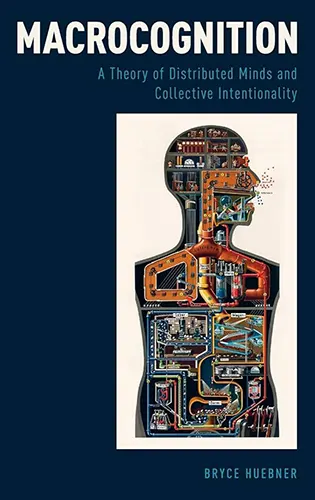
Macrocognition
A Theory of Distributed Minds and Collective Intentionality
Bryce Huebner develops a novel approach to distributed cognition and collective intentionality, arguing that genuine cognition requires the capacity for flexible, goal-directed behavior enabled by integrated representational systems. It posits that collective mentality should be ascribed where specialized subroutines are integrated to yield group-relevant, goal-directed behavior. The approach reveals that there are many kinds of collective minds, some more akin to those of honeybees or cats than humans. It challenges traditional notions of collective intentionality, suggesting that groups are unlikely to be "believers" in the fullest sense, shedding new light on questions of collective intentionality and responsibility.

Malcolm’s 100× Vision
Malcolm Ocean paints a picture of a future where human collaboration reaches new heights, imagining a world in the 2030s where small groups of people achieve profound synchronicity, forming “collective brains” capable of solving complex problems. These groups are part of larger networks that tackle global issues, create innovative products, and foster personal growth. Ocean envisions a society where work is deeply fulfilling, financial security is guaranteed, and human potential is maximized through trust, emotional coherence, and shared consciousness. It’s a hopeful glimpse into a world of enhanced human connection and capability.

Man in Universe
Through cosmic timescales, humanity has voyaged in its vessel Earth, navigating by the star-charts of knowledge. Now we enter unmapped seas, led on by curiosity's compass. Though frail, our minds pilot mighty technologies, taming invisible forces to reshape our world. If we attune to the celestial rhythms resonant in matter's deepest reality, we may yet fulfill our odyssey's purpose—to be worthy stewards of the living jewel suspended in the eternal darkness.

Man's Place in the Universe
Reflexions on Complexity
In this unusually personal essay, Teilhard speaks almost across the table, inviting us to rethink our cosmic standing. He shows how humanity, once dwarfed by vast space and tiny particles, regains significance through a third dimension of reality: complexity. As matter organizes itself into ever-deeper centers, consciousness rises—and in us, becomes self-aware. Humanity is not a cosmic accident, he suggests, but the universe awakening to itself and preparing its next leap.

Manifesto on the Spirit of Planetary Consciousness
Our future is in our hands. László's manifesto calls on each of us to embrace creativity, diversity, and responsibility to evolve society toward stability and sustainability. By shifting our individual and collective values to recognize how we all depend on and impact each other, we can build a peaceful world where all people thrive. It starts with transforming our own minds and spirits.

Megatripolis Opening Night
Terence McKenna discusses the discovery of a new legal psychedelic compound from the salvia divinorum plant. He argues that humanity is on the brink of a cultural transformation driven by the accelerating production of novelty in the universe, enabled by psychedelics and technology. He envisions a transcendental future where boundaries dissolve and consciousness evolves.

Merging Minds
The Conceptual and Ethical Impacts of Emerging Technologies for Collective Minds
A growing number of technologies are currently being developed to improve and distribute thinking and decision-making. Rapid progress in brain-to-brain interfacing and swarming technologies promises to transform how we think about collective and collaborative cognitive tasks across domains, ranging from research to entertainment, and from therapeutics to military applications. As these tools continue to improve, we are prompted to monitor how they may affect our society on a broader level, but also how they may reshape our fundamental understanding of agency, responsibility, and other key concepts of our moral landscape.
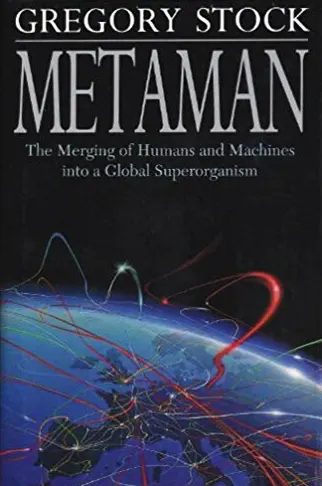
Metaman
The Merging of Humans and Machines into a Global Superorganism
In this visionary book, Gregory Stock gives us a new way of understanding our world and our future. He develops the provocative thesis that human society has become an immense living being: a global superorganism in which we humans, knitted together by our modern technology and communication, are like the cells in an animal's body. Drawing on impressive research, Stock shows this newly formed superorganism to be more than metaphor: it is an actual living creature, which he has named Metaman, meaning beyond and transcending humans.

Mind Outside Brain
A Radically Non-Dualist Foundation for Distributed Cognition
We approach the problem of the extended mind from a radically non-dualist perspective. The separation between mind and matter is an artefact of the outdated mechanistic worldview, which leaves no room for mental phenomena such as agency, intentionality, or feeling. We propose to replace it by an action ontology, which conceives mind and matter as aspects of the same network of processes. By adopting the intentional stance, we interpret the catalysts of elementary reactions as agents exhibiting desires, intentions, and sensations. Autopoietic networks of reactions constitute more complex super-agents, which moreover exhibit memory, deliberation and sense-making. In the specific case of social networks, individual agents coordinate their actions via the propagation of challenges. The distributed cognition that emerges from this interaction cannot be situated in any individual brain. This non-dualist, holistic view extends and operationalises process metaphysics and Eastern philosophies. It is supported by both mindfulness experiences and mathematical models of action, self-organisation, and cognition.

Nature is the Center of the Mandala
Presented at the Shared Visions bookstore, Terence talks about humanity's path towards greater consciousness, and attempts to take a glance at what comes after the Omega Point.
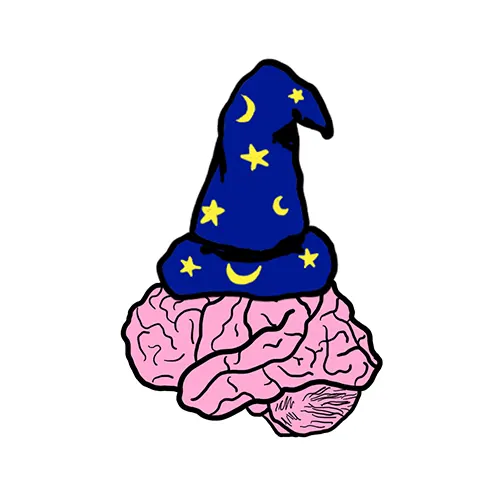
Neuralink and the Brain's Magical Future
What if your brain could seamlessly connect to a computer, enhancing your intelligence and unlocking new abilities? Tim Urban dives into Neuralink, Elon Musk’s ambitious project to merge minds with AI. Our brains, while remarkable, are slow compared to machines—Neuralink’s neural lace technology could change that. But this isn’t just about creating cyborgs; it’s about overcoming human limitations and shaping the future of intelligence itself. Are we on the verge of a true symbiosis with AI?
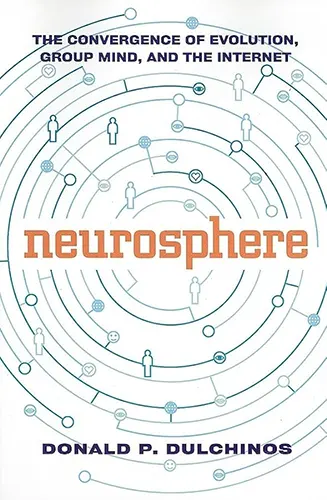
Neurosphere
The Convergence of Evolution, Group Mind, and the Internet
According to Donald Dulchinos, the real action on the Internet isn’t in the realm of commerce. It is, plain and simple, in the realm of religion. But not exactly that old-time religion. This book is about the spiritual impact of our increasing ability to communicate quickly and with enhanced evolution. It's about our search for meaning, our hunger for a glimpse at humanity's future development in which, frighteningly or excitingly, the trend is clearly toward increasing integration of telecommunications and information technology with the body itself. Electronic prosthetics, direct neural implants, and the brain's control of electronic and mechanical limbs move the boundary that used to exist between human and machine to some undefined frontier inside our bodies, our brains, and, perhaps, our minds.

Noospheric Consciousness
Integrating Neural Models of Consciousness and of the Web
The world-wide web has been conceptualized as a global brain for humanity due to its neural network-like organization. To determine whether this global brain could exhibit features associated with consciousness, we review three neuroscientific theories of consciousness: information integration, adaptive resonance and global workspace. These theories propose that conscious states are characterized by a globally circulating, resonant pattern of activity that is sufficiently coherent to be examined and reflected upon. We then propose a correspondence between this notion and Teilhard de Chardin’s concept of the noosphere as a forum for collective thinking, and explore some implications of this self-organizing dynamics for the evolution of shared, global understanding.

Note on the Biological Structure of Mankind
Humanity isn’t raw clay, but a living, evolving organism shaped by deep cosmic laws. As consciousness and complexity entwine, the human mass tightens, organizes, and spiritualizes itself. Diversity must be honored, unity embraced. Any blueprint for the future that ignores these biological forces is doomed from the start.

Note on the Present Reality and Evolutionary Significance of a Human Orthogenesis
Has evolution stalled at humanity? No, says Teilhard—it has shifted. As biology grows more complex, humans fuse into a collective mind, revealing that evolution is becoming self-directed. In us, life stops merely unfolding and begins consciously arranging the world and itself.

On Looking at a Cyclotron
Reflections on the Folding-Back upon Itself of Human Energy
Visiting Berkeley’s cyclotrons, Teilhard de Chardin sees more than machines—he perceives symbols of humanity’s own acceleration. Our vast networks of research, energy, and invention, converging like particles in a magnetic field, are drawing humankind into a single reflective consciousness—an evolutionary spiral toward the ultra-human, where science and spirit finally unite.

On Nuclear Weapons and World Government
Addressing a federal world government rally via radio from his home in Princeton, Einstein talked about his personal views on the proliferation of nuclear weapons and the need for a global human government.

On The Probable Existence Ahead Of Us Of An ‘Ultra-Human’
Teilhard talks about a vast realm of the Ultra-Human which lies ahead of us: a realm in which we shall not be able to survive, or super-live, except by developing and embracing on earth, to the utmost extent, all the powers of common vision and unanimazation that are available to us.

On the Nature of the Phenomenon of Human Society, and its Hidden Relationship with Gravity
We stand at the dawn of a new era for humanity. As Teilhard de Chardin observed, cosmic forces are propelling our social evolution. Though born of gravitational forces, our consciousness now rises with its own creative power to bring forth previously unimagined realms of thought and social organization. Our future lies in our hands.
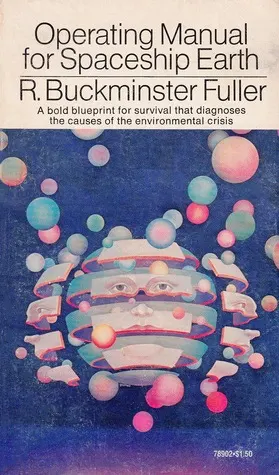
Operating Manual for Spaceship Earth
In this essay on man, Mr. Fuller expresses what may well be his penultimate view of the human condition. Here, in a mood at once philosophical and involved, he traces humanity's intellectual evolution and weighs our capability for survival on this magnificent craft, this Spaceship Earth, this superbly designed sphere almost negligible in dimension compared to the great vastness of space. Mr. Fuller is optimistic that we will survive and, through research and development and increased industrialization, generate wealth so rapidly that we can do very great things. But, he notes, there must be an enormous educational task successfully accomplished right now to convert our tendency toward oblivion into a realization of his potential, to a universe-exploring advantage from this Spaceship Earth.

Outline of a Dialectic of Spirit
Teilhard de Chardin explores how human understanding evolves through a dynamic interplay between the known and the unknown, like a spark leaping back and forth. He argues that the universe is driven by a rising complexity and consciousness, culminating in humanity. This progression points toward an ultimate convergence, or “Omega Point,” which he identifies with a transcendent God. Teilhard connects this cosmic evolution to Christianity, suggesting that Christ embodies this divine culmination, uniting the material and spiritual realms in a harmonious, evolving whole.

Permitting Smart People to Hope
McKenna traipses through a mélange of scientific and technological folderol—the detection of the top quark, swift progress on sequencing the human genome, newfangled theories about the origin of the moon, quantum bafflements like non-locality, the proliferation of the internet and information technology, speculations on the nature of time from Prigogine, and sundry other bamboozlements. He elucidates how these breakthroughs in diverse fields might converge to profoundly transform human civilization, culture, and consciousness in the imminent future.
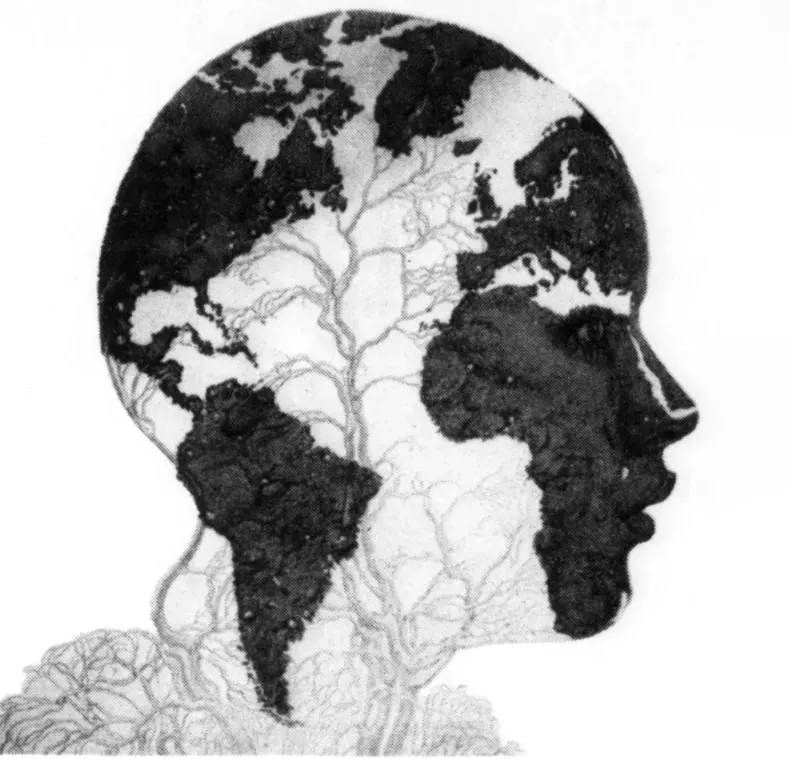
Plan, Plant, Planet
McKenna urges us to look at plants more deeply and find within their biological organization a model for sustainable modern civilization.
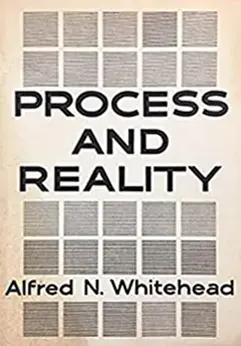
Process and Reality
An Essay in Cosmology
One of the major philosophical texts of the twentieth century, Process and Reality is based on Alfred North Whitehead’s influential lectures that he delivered at the University of Edinburgh in the 1920s. In it, he propounds a philosophy of organism (or process philosophy), in which the various elements of reality are brought into a consistent relation to each other. It is also an exploration of some of the preeminent thinkers of the seventeenth and eighteenth centuries, such as Descartes, Newton, Locke, and Kant.
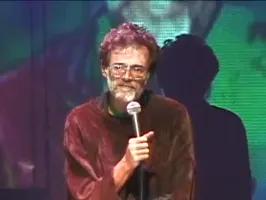
Psychedelics in the Age of Intelligent Machines
Humanity is metamorphosing through the synergy of psychedelics and machines, transcending biological constraints to become a galactic, immortal intelligencia. Print defined our ego boundaries, but electronic media and plant allies are dissolving those illusions. Merging with superintelligent AIs, we’ll birth an alchemical singularity—a spiritual, universe-taming mind born from techno-shamanic ecstasy. History crumbles as novelty’s virus engulfs the old operating systems, unleashing our wildest potentials. The felt presence of boundless experience awaits!

Reflections on the Scientific Probability and the Religious Consequences of an Ultra-Human
Evolution as a cosmic drama: matter rising through life into reflective humanity, converging toward a planetary mind. Teilhard says this “ultra-human” destiny fuses science and spirit, where God is not above but ahead—emerging as love at the core of creation, and igniting the world into a conscious fire.

Sacred Plants as Guides
New Dimensions of the Soul
Terence McKenna takes us on a journey through history, exploring the powerful role of psychedelic plants in human evolution and consciousness. He argues that these plants offer a gateway to hidden realms of reality, inhabited by enigmatic entities and offering profound insights. Reconnecting with these ancient allies could be the key to solving our modern problems and unlocking a brighter future for humanity.
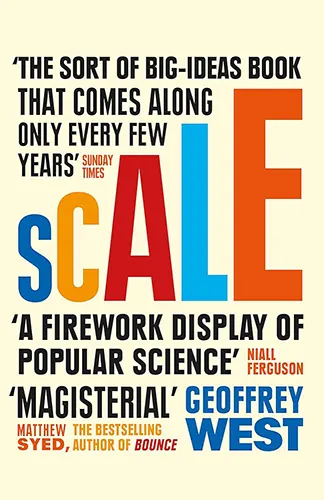
Scale
The Universal Laws of Growth, Innovation, Sustainability, and the Pace of Life in Organisms, Cities, Economies, and Companies
The former head of the Sante Fe Institute, visionary physicist Geoffrey West is a pioneer in the field of complexity science, the science of emergent systems and networks. The term “complexity” can be misleading, however, because what makes West’s discoveries so beautiful is that he has found an underlying simplicity that unites the seemingly complex and diverse phenomena of living systems, including our bodies, our cities and our businesses.

Science and Ethics
Science and Ethics was the title of the "Conway Memorial Lecture" delivered by English biologist, scientist and mathematician John Burdon Sanderson Haldane at Essex Hall in London.

Self and Other
Alan coaxes the listener’s mind to simultaneously zoom in and zoom out in an effort to demonstrate that identity is merely an intellectual hallucination. Instead, personal identity is fluid, ranging from one’s constituent atoms and molecules all the way out to the farthest bounds of cosmic existence. Overcoming this mental myopia leads to greater harmony, contentment, and a desire to playfully dance with this universal energy system.

Shamanology
Terence McKenna illuminates the world of Amazonian shamanism and its visionary brew, ayahuasca. He presents these plant hallucinogens not as simple drugs, but as sophisticated indigenous technologies for exploring consciousness. McKenna argues they are vital tools for evolving language, deconditioning us from cultural myths, and navigating the future of human evolution as we journey into the cosmos and the imagination.

Some Reflexions on the Conversion of the World
Humanity has discovered infinite space, endless time, and unstoppable evolution—a new faith in progress. Teilhard says: don’t fight it, fuse it. Christianity must reveal Christ as the universe’s living center, not a brake on growth but its ultimate flame. Only then can heaven and earth unite, and the fire of faith spread like evolution itself.

Speaking Metaphorically
Terence McKenna explores how psychedelics can alter language and consciousness, unlocking a transformative phenomenon at the heart of human evolution. He envisions a shift towards a visible, gestalt-like language of meaning that will profoundly reshape culture, enabling our species to transcend earthly confines and venture into the cosmos. Proposing psychedelics as a pheromonal regulator for collective consciousness, McKenna suggests this archaic linguistic revolution holds the keys to our future, bridging the gap between nature and technology in ways that could determine the very destiny of humanity.

Super- and/or Meta-being(s)
Could human consciousness transcend biological limits and merge with advanced technology to achieve a form of cybernetic immortality? In Heylighen’s vision, our essence suvives through evolving hybrid systems, preserving individuality while fostering unprecedented connectivity. This integration doesn’t diminish our humanity but amplifies it, allowing us to explore the cosmos and push the boundaries of existence. While not everyone may choose this path, those who do could shape the destiny of our species and the cosmos.

Super-Humanity, Super-Christ, Super-Charity
Some New Dimensions for the Future
Humanity, Teilhard argues, is awakening in an evolutionary storm—one pulling us toward a larger, more unified “Super-Humanity.” In this widening scale of mind and world, Christ emerges not as a distant memory but as the universe’s glowing center, the Omega drawing all things together. From this cosmic magnetism arises a “Super-Charity”: love powerful enough to drive evolution itself.
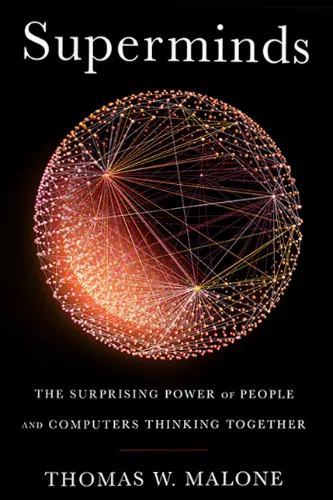
Superminds
The Surprising Power of People and Computers Thinking Together
In Superminds, Malone reveals the powerful possibilities when human and machine intelligence unite. Drawing on cutting-edge research, he shows how groups of people and computers can achieve remarkable collective intelligence—“superminds” that far surpass the capabilities of any individual. From reimagining business practices to addressing societal challenges, Malone provides an exciting vision of the future where humans work hand-in-hand with technology to enhance our problem-solving abilities in remarkable ways.

Technology and the Human Environment
Perhaps no futurist has been more energetic, more vocal, more popular, or more optimistic than a seventy-six-year-old engineer-visionary, poet-philosopher named R. Buckminster Fuller. Fuller’s planetary perspective has won him zealous converts the world over. Even those who disagree with his technological transcendentalism share unbegrudged admiration for the world’s youngest old futurist.

The Analysis of Life
Life's essence transcends scientific scrutiny. Though such examination reduces life to physical mechanisms, synthesis reveals the boundless consciousness and freedom underlying all existence. As Teilhard de Chardin contemplated, life organizes chance through each being's innate creativity. From this vision, we can glimpse life's mystical emergence.

The Atomism of Spirit
Teilhard de Chardin argues that human plurality mirrors the multiplicity of atoms and stars. Just as matter progresses in complexity from subatomic particles to living cells, so consciousness evolves through increasing unification, culminating in the “Omega point”—supreme consciousness and union.

The Christic
The universe is evolving toward a profound unity where science and spirituality merge, Teilhard says. He envisions human consciousness and the cosmos intertwined, sparking a transformative energy that unites all life in a new, dynamic spirituality—an awakening that promises to ignite our collective future.

The Coming Technological Singularity
How to Survive in the Post-Human Era
Within thirty years, we will have the technological means to create superhuman intelligence. Shortly after, the human era will be ended. Is such progress avoidable? If not to be avoided, can events be guided so that we may survive? These questions are investigated. Some possible answers (and some further dangers) are presented.

The Computational Boundary of a “Self”
Developmental Bioelectricity Drives Multicellularity and Scale-Free Cognition
All epistemic agents physically consist of parts that must somehow comprise an integrated cognitive self. Biological individuals consist of subunits (organs, cells, and molecular networks) that are themselves complex and competent in their own native contexts. How do coherent biological Individuals result from the activity of smaller sub-agents?

The Cybernetic Manifesto
Turchin and Joslyn’s manifesto imagines humanity’s next evolutionary leap: just as cells once united to form complex organisms, they foresee humans merging into “super-beings” through direct neural connections, achieving a form of technological immortality. They argue that evolution’s new frontier isn’t biological, but rather conscious and creative, driven by human will instead of natural selection. While not everyone will choose this path of integration, they suggest it’s those who do who will ultimately explore the cosmos.

The Directions and Conditions of the Future
Teilhard de Chardin envisions human evolution as a purposeful journey guided by three intertwined trends: a natural push toward global unity, technological advances that expand our capabilities, and a deepening of reflective consciousness. Yet, he warns that without a genuine inner cohesion—rooted in love and mutual understanding—these forces may lead to a cold, mechanized future. In his view, our destiny is not random but a guided ascent toward a higher, more meaningful collective awareness.

The Edge Runner
A presentation revolving around the question: what is going on in the universe? Special emphasis is given to the human condition, the accelerating complexification of the cosmos, and options for the human collectivity as it faces the future.

The End of the World
Teilhard explores a cosmic vision of humanity's future, envisioning a collective consciousness facing a final choice about God. He describes the end of the world not as a disaster, but as a spiritual transformation, and imagines a dramatic unification of all beings with the divine, culminating in a mystical fusion of God and the universe.

The Energy of Evolution
Teilhard de Chardin sees evolution not as blind biology but as energy awakening to thought. Humanity inaugurates a new phase: self-directed, convergent, planetary, driven less by survival than by the magnetism of the future. Evolution’s true axis is consciousness itself, pulled toward an ultimate point of unity where being and becoming fuse.

The Essence of the Democratic Idea
“A biological approach to the problem.” Written in response to a questionnaire from UNESCO and later published in The Future of Man.

The Evolution of Responsibility in the World
Teilhard argues that responsibility isn’t just a social rule but a cosmic imperative. The universe, he claims, is hurtling toward unity—collapsing matter into life, life into consciousness. Today, planetary compression—population growth, tech, and globalization—fuels interdependence. Each choice ripples across humanity: a pilot’s error, a scientist’s discovery, a leader’s word. This isn’t mere ethics; it’s evolution’s demand. As humanity merges into a thinking superorganism, responsibility becomes biological—a binding thread in Earth’s living tapestry, transcending laws to reflect our shared cosmic destiny.

The Global Brain as a Model of the Future Information Society
The Global Brain paradigm views the emerging global information network connecting humans and technology as a nervous system for Earth's social superorganism. This special issue surveys opportunities and challenges in developing this potentially more intelligent, synergetic system. Contributions explore political, economic, and philosophical aspects, aiming to guide the transition towards a sustainable society empowering diversity.

The Global Brain as a New Utopia
The global brain can be conceived most fundamentally as a higher level of evolution, the way humans form a higher level of organization that evolved out of the animals. Although the analogy between an organism and a society can be applied even to primitive societies, it becomes clearly more applicable as technology develops. As transport and communication become more efficient, different parts of global society become more interdependent. At the same time, the variety of ideas, specializations, and subcultures increases. This simultaneous integration and differentiation creates an increasingly coherent system, functioning at a much higher level of complexity.
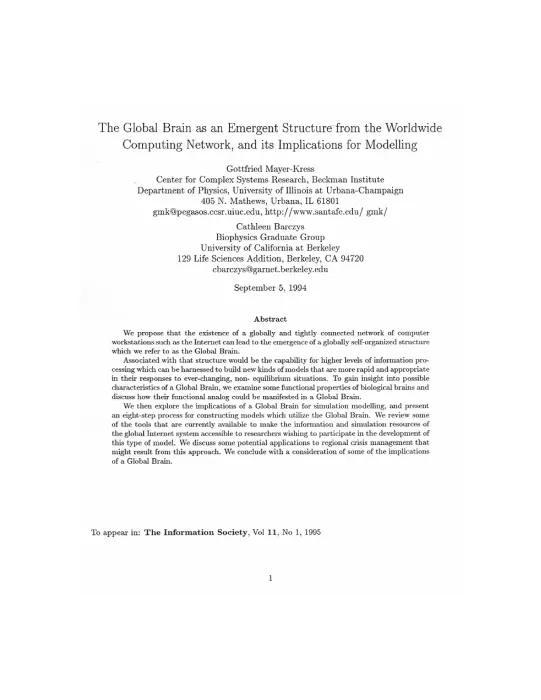
The Global Brain as an Emergent Structure from the Worldwide Computing Network
We propose that the existence of a globally and tightly connected network of computer workstations such as the Internet can lead to the emergence of a globally self-organized structure which we refer to as the Global Brain.

The Global Superorganism
An Evolutionary-Cybernetic Model of the Emerging Network Society
The organismic view of society is updated by incorporating concepts from cybernetics, evolutionary theory, and complex adaptive systems. Global society can be seen as an autopoietic network of self-producing components, and therefore as a living system or “superorganism”.

The Gnostic Astronaut
Going off the deep end at Shared Visions Bookstore in Berkeley, trailblazer Terence McKenna plunges into freaky psychedelic phenomena that unravel consensual reality. He describes gonzo techniques for sparking glossolalia on 'shrooms—speaking pure alien word salad in an ecstatic state beyond language. McKenna argues these kooky experiences expose the limits of our linguistic operating systems, suggesting our minds are hardwired into a deeper bio-lingo. He ponders far out connections between psychedelics, paranormal events, and alien contact, and emphasizes riding the wave of raw experience over textbook pharmacology in grokking the psychedelic sphere.

The Great Simplification
A modern take on Pierre Teilhard de Chardin’s The Phenomenon of Man and Peter Russell’s The Global Brain, Nate Hagens describes the “Great Simplification:” an inevitable economic and cultural transition beginning in the not-too-distant future.

The Moment of Choice
A Possible Interpretation of War
War, Teilhard tells us, is not humanity’s death rattle but its birth cry—the agony of a species pressed toward unity. The tyrant’s dream of domination is a counterfeit evolution; the real ascent is convergence, where nations complete rather than consume one another. Our future will not be forged by violence, but by the one force stronger than force: love, binding us into a single soul of Earth.

The Nature of Living Systems
General systems behavior theory is a set of related definitions, assumptions, and propositions which deal with reality as an integrated hierarchy of organizations of matter and energy. General systems behavior theory is concerned with a special subset of all systems: the living ones. Even more basic to this presentation than the concept of “system” are the concepts of “space,” “time,” “matter,” “energy,” and “information,” because the living systems discussed in this paper exist in space and are made of matter and energy organized by information.
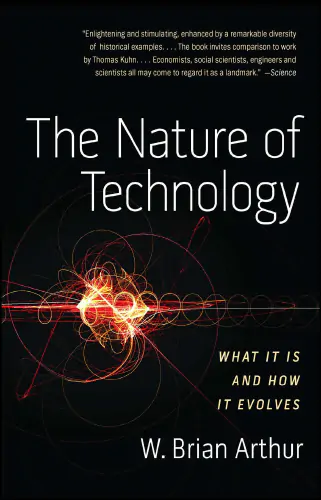
The Nature of Technology
What It Is and How It Evolves
The Nature of Technology reveals technology as a living ecosystem of ideas, where each invention grows from past ones and sparks new possibilities. W. Brian Arthur shows how this self-reinforcing web drives progress, reshapes society, and evolves much like nature itself—messy, unpredictable, and endlessly creative.

The Phyletic Structure of the Human Group
Teilhard de Chardin explores the arc of human evolution, tracing humankind's progression from primordial divergence to modern convergence. He argues that we now stand at an equator where further global compression will compel our species to attain unimaginable new heights of consciousness. An eloquent exploration of our place in the cosmos and destiny as thinking beings.

The Position of Man in Nature and the Significance of Human Socialization
Is there in the universe a main axis of evolution? Pierre Teilhard de Chardin argues for the centrality and progressive direction of life, human thought, and social bonds in cosmic unfolding. His four propositions lead to the bold claim that Christianity drives humanity's spiritual ascent, culminating in a transcendent fulfillment.

The Psychological Conditions of the Unification of Man
Teilhard discusses the objective and subjective conditions necessary for humankind to maintain its passion for unification and progress. Objectively, the universe must be perceived as open and centered towards the future. Subjectively, humanity must develop a heightened sense of the irreversible, the cosmic, and a faith that serves as a driving force for the world's advancement, which he suggests can be found in a properly understood Christianity.

The Religious Value of Research
Teilhard casts scientific research as humanity’s next evolutionary pulse—our collective mind awakening to shape its own future. He argues that the modern hunger to know and create is nothing less than evolution reflecting on itself, a divine power working through human inquiry. For him, research becomes sacred: the meeting point where faith in God and faith in human potential fuse into a single, world-transforming spiritual force.

The Rise of the Other
“Never has the earth vibrated with more spiritual intensity”—Teilhard de Chardin sees our current global conflicts as growing pains of human evolution. He envisions our increasing interconnectedness not as a threat, but as a path to higher consciousness. As we develop a “sense of man” and universal love, we may transcend our struggles, forming a unified superorganism—the next leap in cosmic evolution.

The Sense of Man
Humanity is not a scatter of individuals, but the birth of a single mind—the noosphere. Just as life once ignited from matter, thought now ignites from life. Teilhard says our task is no longer survival alone, but conscious evolution to forge a unified destiny where the universe awakens to itself through us.

The Sense of the Species in Man
Teilhard de Chardin explores humanity’s evolution from instinct-driven animals to self-aware individuals, and now towards a globally interconnected noosphere. He argues that as our planet becomes more crowded, we must develop a “new sense of the species”—a conscious drive towards collective fulfillment and advancement. This involves improving human genetics, scientific discovery, and fostering unity through love and shared purpose, all aimed at humanity’s continued growth and cosmic significance.

The Social Superorganism and its Global Brain
Society can be viewed as a multicellular organism, with individuals in the role of the cells. The network of communication channels connecting individuals then plays the role of a nervous system for this superorganism, i.e. a “global brain.”

The Spirit of the Earth
Teilhard depicts humanity as the Earth awakening to itself, evolution rising toward ever-greater unity. Love and consciousness converge into a planetary spirit, but this ascent, he insists, cannot endure without religion—our innate need for an absolute that calls us forward. In the universe’s unfolding, God emerges as evolution’s necessary summit and sustaining fire.

The Story of Us
A whimsical and thought-provoking look at how large numbers of interthinking brains turn individual organisms into a larger, coherent superorganism, and how easy it is for such a superorganism to deteriorate if its constituent cells neglect it.

The Stuff of the Universe
Gazing upon the island of Saint Helena during his voyage from New York City to the Cape Peninsula, Teilhard de Chardin articulates his vision of human evolution culminating in cosmic unity with the Christ—the ultimate center of consciousness and complexity in the universe.

The Third Story of the Universe
Brian Swimme explores the concept of the noosphere.

The Transition from the Biosphere to the Noösphere
Vernadsky explores how human knowledge transforms Earth’s biosphere into the “noosphere,” a new geological state driven by science and culture. He highlights how life, especially human activity, reshapes the planet through energy and innovation, from ancient fire mastery to modern technology. This dynamic interplay between life and Earth reveals a fascinating, ever-evolving story of our planet’s history and humanity’s profound impact on its future.

The Ultimate Unity for Thought is the Society of Minds
This lofty philosophical treatise passionately argues that the pinnacle of thought and being is a divine society of free spirits in fellowship, whose joyful self-realization through mutual service and growth comprises the final purpose of all creation. Our supreme hope is participation in this Community of Minds.

The Universe Enlightened
Harding argues that awakening isn’t private but cosmic: to truly know yourself is to rediscover a living, intelligent universe. Modern science, he claims, quietly supports this ancient vision. When the illusion of a separate self dissolves, the universe itself wakes up as home, alive and coherent.

The Urban Effect
A Doctrine of the Infant God
Like a cosmic infant slowly learning to walk, reality is toddling towards its divine potential in this essay by Soleri. Through the urban effect of dense interactions, lifeless matter evolves in complexity and miniaturization, transforming into living spirit. The cosmic journey culminates when all moments coexist in esthetic equity.

The Vision of a Better World
Two visionaries, Tom Munnecke and Barbara Marx Hubbard, engage in an uplifting dialogue exploring the emergence of human creativity and consciousness. They trace inspirations from mentors like Jonas Salk, who recognized futuristic possibilities in Hubbard, and Buckminster Fuller, who affirmed humanity's potential. Together they shine light on the crisis of our times as the birth pangs of a new civilization, calling us to connect with the creativity arising globally. Their exchange weaves threads of hope and positivity, envisioning a future where all people actualize their gifts in service of our world.
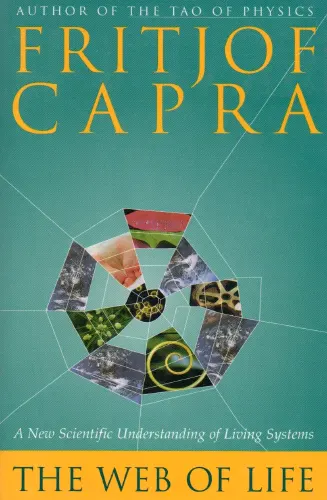
The Web of Life
A New Scientific Understanding of Living Systems
During the past twenty-five years, scientists have challenged conventional views of evolution and the organization of living systems and have developed new theories with revolutionary philosophical and social implications. Fritjof Capra has been at the forefront of this revolution. In The Web of Life, Capra offers a brilliant synthesis of such recent scientific breakthroughs as the theory of complexity, Gaia theory, chaos theory, and other explanations of the properties of organisms, social systems, and ecosystems. Capra's surprising findings stand in stark contrast to accepted paradigms of mechanism and Darwinism and provide an extraordinary new foundation for ecological policies that will allow us to build and sustain communities without diminishing the opportunities for future generations.

The World is a Network
In this discussion, Fritjof Capra discusses systems thinking, the cognitive dimension of life, nonlinear causality, emergence of novelty in living systems, ethics, world problems and solutions, transformative learning, and the importance of community. He covers the systems view of life from his book and emphasizes relationships, interconnectedness, and sustainability.

The World-Wide Web as a Super-Brain
From Metaphor to Model
If society is viewed as a superorganism, communication networks play the role of its brain. This metaphor is developed into a model for the design of a more intelligent global network. The World Wide Web, through its distributed hypermedia architecture, functions as an “associative memory”, which may “learn” by the strengthening of frequently used links. Software agents, exploring the Web through spreading activation, function as problem-solving “thoughts”. Users are integrated into this “super-brain” through direct machine interfaces and the reciprocal exchange of knowledge between individual and Web. (Published in Cybernetics and Systems ’96, p. 917–922.)

Theory of Collective Mind
The human mind harbors wondrous capacities. Beyond understanding individual minds, we can represent unified awareness across souls, feeling strands of consciousness intertwine. As one, we comprehend realities; as one, we hold intentions. Synchronous experiences spin these mental webs, binding our fates and etching shared worlds upon our hearts. Though fragile, such unions nurture cooperation's tender bloom. Let us marvel at this collective mind—a tapestry of perspectives, stronger than its threads. In this oneness we find hope, for it whispers: even in darkness, we need not walk alone.
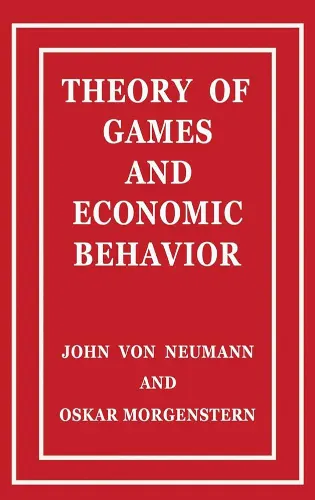
Theory of Games and Economic Behavior
This is the classic work upon which modern-day game theory is based. What began more than sixty years ago as a modest proposal that a mathematician and an economist write a short paper together blossomed, in 1944, when Princeton University Press published Theory of Games and Economic Behavior. In it, John von Neumann and Oskar Morgenstern conceived a groundbreaking mathematical theory of economic and social organization, based on a theory of games of strategy. Not only would this revolutionize economics, but the entirely new field of scientific inquiry it yielded—game theory—has since been widely used to analyze a host of real-world phenomena from arms races to optimal policy choices of presidential candidates, from vaccination policy to major league baseball salary negotiations. And it is today established throughout both the social sciences and a wide range of other sciences.
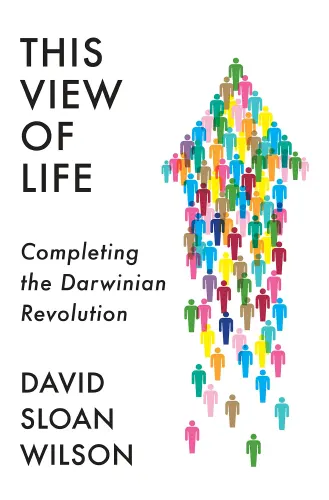
This View of Life
Completing the Darwinian Revolution
It is widely understood that Charles Darwin’s theory of evolution completely revolutionized the study of biology. Yet, according to David Sloan Wilson, the Darwinian revolution won’t be truly complete until it is applied more broadly—to everything associated with the words “human,” “culture,” and “policy.” In a series of engaging and insightful examples—from the breeding of hens to the timing of cataract surgeries to the organization of an automobile plant—Wilson shows how an evolutionary worldview provides a practical tool kit for understanding not only genetic evolution but also the fast-paced changes that are having an impact on our world and ourselves. What emerges is an incredibly empowering argument: If we can become wise managers of evolutionary processes, we can solve the problems of our age at all scales—from the efficacy of our groups to our well-being as individuals to our stewardship of the planet Earth.

Towards the Unknown
McKenna doth insist mushrooms assist Our minds to resist what we thought we had missed. Beyond normal ken, psychedelics send Our thoughts to transcend, our culture to mend. Though seen as a vice by the mainstream to chide These compounds provide portals to sights inside That propel our race to a posthuman place By opening space for our minds to embrace.

Truth and Relativity
Philosophy: East and West, Program 14
Through the example of a city, Alan encourages his listeners to reevaluate the definition of their personal identities. Is a person a fully autonomous agent, or might they be a cell in a vast organism? Perhaps it’s necessary to understand both perspectives and recognize that each scale of magnitude depends on all others to manifest as it does.

Ubuntu and the Law in South Africa
While difficult to define, the concept of ubuntu is worth preserving and adapting to modern South African society.

Universalization and Union
An Attempt at Clarification
Teilhard examines the tumultuous state of humanity during World War II, proposing a cosmic perspective on our collective destiny. He argues that beneath the chaos lies a grand process of universal synthesis, driven by increasing complexity and consciousness. He sees the war as a critical point in human evolution, heralding the emergence of a global consciousness. Despite apparent divisions, Teilhard envisions a convergence of ideologies towards a unified, personalized humanity. He urges all to embrace universalism, believing this path will lead to mutual understanding and ultimate unity.

Varieties of Order
Philosophy: East and West, Program 21
Societies—organisms or machines? Watts weighs in, finding us more cog-like than cells. But beneath individuals and collectives, he spies nature's web—infinitely intricate, ineffably complex. This tangled tapestry, the Taoist lǐ, makes a mockery of our mechanistic ways. So while groups lack living complexity, the individual is no alpha and omega. Our world's too messy for such simplicity.

Way Beyond Seeking
Alan reflects on key principles of Taoism, noting how even a fruit fly views itself as the pinnacle of creation—just as humans do. He explains how opposites like yin and yang rely on each other, like two sticks held in balance. Watts cautions against relying too heavily on words to capture life’s complexity. Yet, through stories and logic, he gently encourages us to embrace non-action, trust intuition, stay humble, and recognize our connection with nature. Taoist ideas to reflect on and savor.

What is the Noosphere?
Planetary Superorganism, Major Evolutionary Transition, and Emergence
Picture Earth evolving a new layer—not of rock or life, but of thought and technology. This “noosphere” is like a planetary brain emerging through our global networks, satellites, and collective intelligence. The paper explores how this mysterious transformation could represent Earth’s next evolutionary leap, potentially leading to planetary consciousness or even contact with other cosmic minds. It’s happening right now, though we’re still figuring out how to guide this planetary metamorphosis.
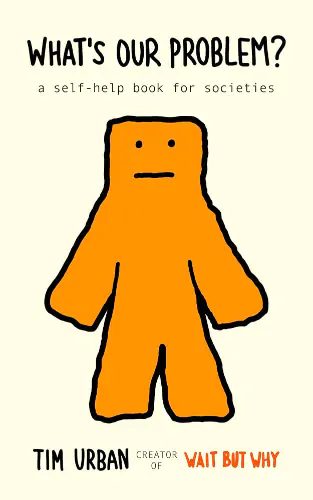
What's Our Problem?
A Self-Help Book for Societies
What's Our Problem? is a deep and expansive analysis of our modern times, in the classic style of Wait But Why, packed with original concepts, sticky metaphors, and 300 drawings. The book provides an entirely new framework and language for thinking and talking about today's complex world. Instead of focusing on the usual left-center-right horizontal political axis, which is all about what we think, the book introduces a vertical axis that explores how we think, as individuals and as groups. Readers will find themselves on a delightful and fascinating journey that will ultimately change the way they see the world around them.

World Wide Brain
The Emergence of Global Web Intelligence and How it Will Transform the Human Race
Ben Goertzel says the Internet is evolving towards a “global Web mind”–an emergent, distributed intelligence surpassing human capabilities. This development, grounded in complexity science, could solve AI’s scalability issues and merge humanity with technology. While potentially solving global problems, it raises concerns about individual freedom. Drawing parallels with spiritual concepts like the noösphere and collective unconscious, this evolution is seen as inevitable and transformative. As we nurture this new form of life, we stand at the threshold of a profound shift in human consciousness and global interconnectedness.

Zoological Evolution and Invention
Humanity’s growing interconnection isn’t a social accident, says Teilhard, but evolution becoming self-aware. If life is now reflecting on—and reinventing—itself, then watching human creativity may reveal how new biological forms once emerged. He asks whether “invention,” not just chance and selection, has always nudged life toward greater complexity. In a universe drifting toward the improbable, he wonders: when did consciousness begin steering evolution?